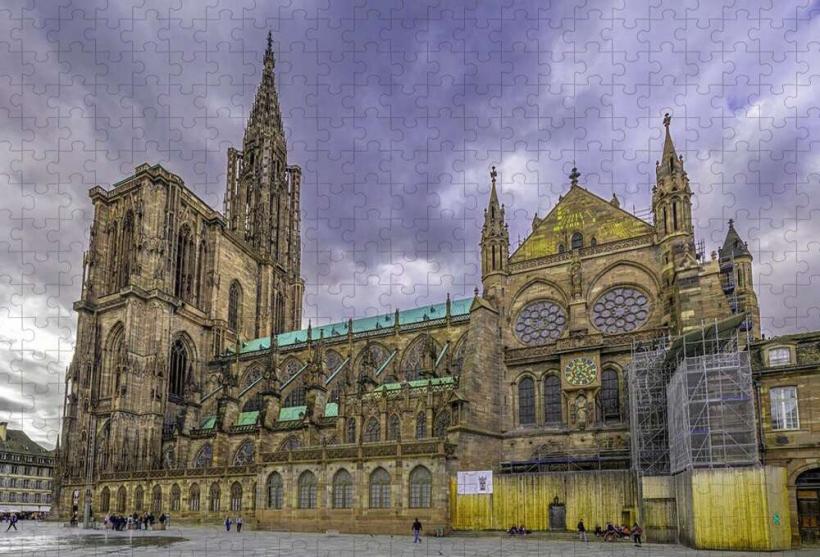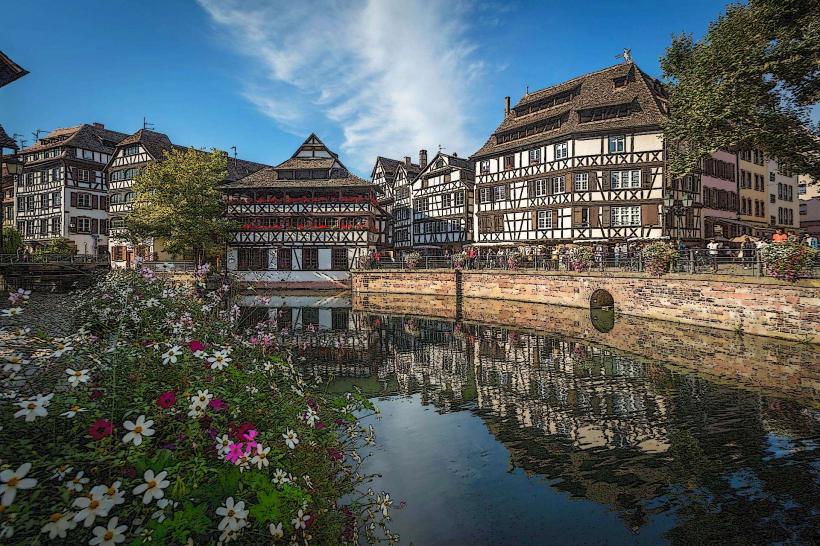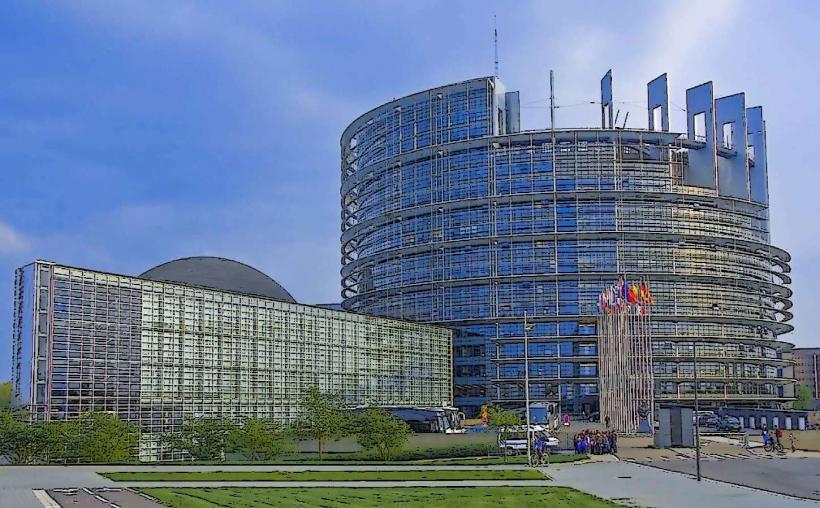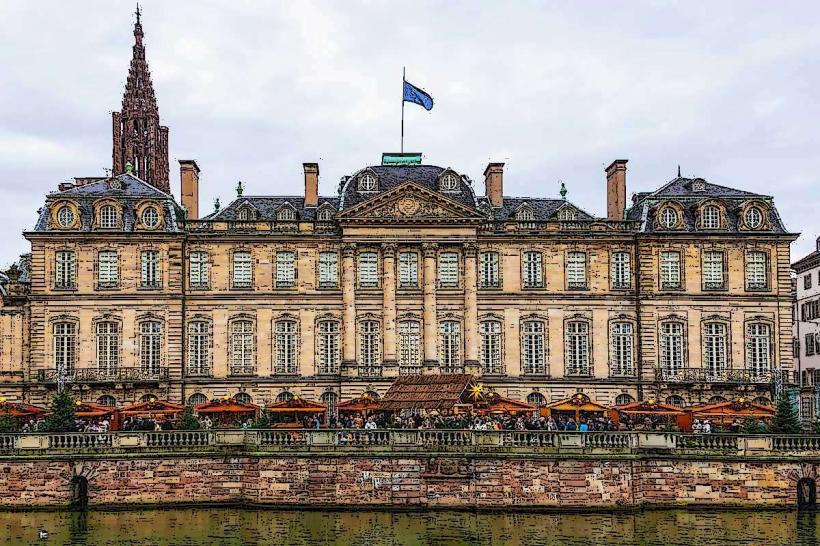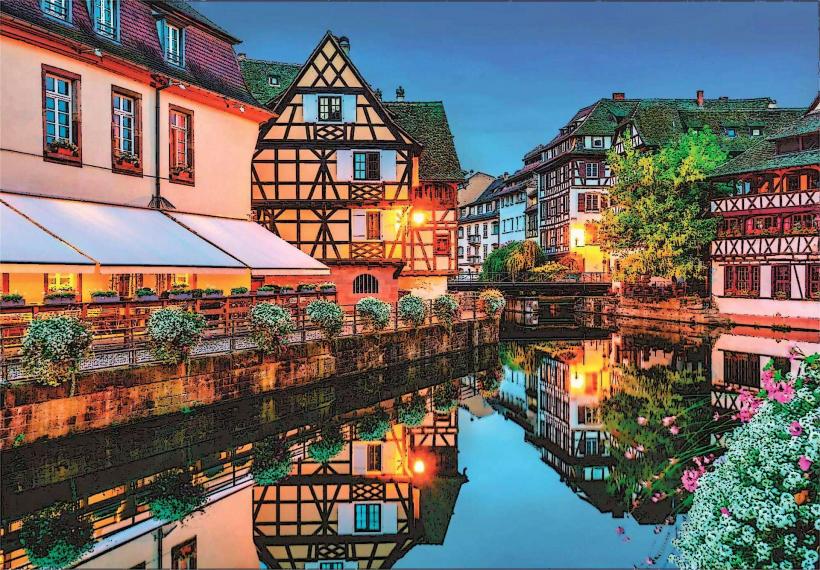Information
City: StrasbourgCountry: France
Continent: Europe
Strasbourg is a historic and vibrant city located in northeastern France, near the German border, and is the capital of the Grand Est region and the Bas-Rhin department. Known for its stunning architecture, rich history, and being the seat of several European institutions, Strasbourg is a unique blend of French and German cultural influences, with a distinctive blend of Gothic, Renaissance, and modern elements.
Here is a detailed overview of Strasbourg:
1. History of Strasbourg
Strasbourg's history spans over two millennia, and the city has seen various rulers and influences, including the Romans, Franks, Holy Roman Empire, and modern France.
Roman Era: Strasbourg was originally a Roman settlement called Argentoratum and served as an important military and administrative center. Remnants of its Roman past, such as portions of the old city walls, can still be seen today.
Medieval Strasbourg: The city became an important medieval center in the Holy Roman Empire, and by the 13th century, it was an influential city in both religious and political matters. Strasbourg’s position as a major center for trade and culture contributed to its wealth and importance during the Middle Ages.
Renaissance to Modern Times: Strasbourg was part of Alsace, a region that frequently shifted between French and German control. It was annexed by France in 1681 and has remained part of the French Republic ever since, though its proximity to Germany has left a significant German influence on its culture, language, and architecture.
2. Key Landmarks and Attractions
Strasbourg is home to many exceptional landmarks, showcasing a fascinating mix of medieval, Renaissance, and modern architecture, as well as its connection to European governance.
Strasbourg Cathedral (Cathédrale Notre-Dame de Strasbourg): One of the most stunning examples of Gothic architecture in the world, the Strasbourg Cathedral is the heart of the city. Its soaring spire (which was the tallest in the world from 1647 to 1874) and intricate facade make it one of the most visited monuments in France. Inside, visitors can marvel at the astronomical clock, which performs a fascinating display every day at noon. The cathedral also offers panoramic views of the city from its viewing platform.
La Petite France (Little France): One of the most picturesque districts of Strasbourg, La Petite France is characterized by its half-timbered houses, cobblestone streets, and canals. This charming area was historically the neighborhood of fishermen and tanners. Today, it is a popular spot for tourists to wander, take a boat tour, and enjoy the quaint charm of the old town.
Palais Rohan: The Palais Rohan, a former episcopal palace, is an impressive Renaissance-style building located near the cathedral. It houses three museums: the Museum of Fine Arts, the Archaeological Museum, and the Museum of Decorative Arts. The Palais Rohan is a great place to explore Strasbourg's artistic and cultural history.
European Institutions: Strasbourg is home to several important European institutions, such as:
- The European Parliament: Strasbourg is one of the main seats of the European Parliament, and visitors can take guided tours to learn about the workings of the European Union (EU).
- The Council of Europe: Another key European institution based in Strasbourg, focusing on human rights, democracy, and the rule of law.
- The European Court of Human Rights: This court, which is tasked with ensuring the protection of human rights across Europe, is located in Strasbourg.
Maison Kammerzell: One of the most famous buildings in La Petite France area, the Maison Kammerzell is a beautifully preserved Renaissance house with ornate woodwork and an eye-catching facade. It was originally built in the 15th century and now houses a restaurant. It’s a great example of Strasbourg's rich architectural heritage.
Parc de l'Orangerie: A peaceful, well-maintained park located near the European institutions, Parc de l'Orangerie offers beautiful gardens, a small lake, and a mini-zoo. The park is a perfect spot for relaxation and picnicking, with views of the European Parliament building and nearby Rhine River.
Ponts Couverts (Covered Bridges): The Ponts Couverts are a series of medieval covered bridges that were part of Strasbourg's defenses during the Middle Ages. These bridges cross the Ill River and are now an iconic symbol of the city. The towers and bridges are a picturesque landmark, offering great views of the La Petite France district.
The Strasbourg Museum of Modern and Contemporary Art (MAMCS): This museum holds a rich collection of modern and contemporary art, with works by famous artists like Picasso, Klee, and Kandinsky. The museum is housed in a grand building on the Rhine River and is one of the major art destinations in Strasbourg.
The Alsatian Museum (Musée Alsacien): This museum showcases the traditional culture of the Alsace region, displaying exhibits on folk art, costumes, domestic life, and crafts. It’s a great place to learn more about the local customs and history of this culturally rich region.
3. Strasbourg’s Cultural Scene
Strasbourg boasts a vibrant cultural scene that blends French and German traditions, offering a variety of experiences throughout the year.
Strasbourg Christmas Markets: Strasbourg is known for having one of the oldest and most beautiful Christmas markets in Europe. The market takes place in the heart of the city, with stalls offering handcrafted gifts, local foods, and holiday treats like vin chaud (hot wine). The city’s cathedral and Place Kléber are transformed into magical winter wonderlands during the holiday season.
Theater and Music: Strasbourg is home to several theaters, such as the Opéra National du Rhin, and cultural venues, offering a diverse range of performances. Classical music, contemporary theater, and operas are regularly held at various venues around the city. Strasbourg also hosts music festivals, including the Strasbourg Music Festival.
Strasbourg Jazz Festival: Held annually, this festival attracts some of the world’s top jazz musicians and features concerts at various venues around the city.
4. Cuisine and Food Culture
Strasbourg’s culinary scene is heavily influenced by Alsatian traditions, with hearty dishes and regional specialties:
- Choucroute (Sauerkraut): This dish is one of the region's most famous, made with fermented cabbage and often served with various types of meats such as sausages, pork, or duck.
- Tarte flambée (Flammekueche): A traditional Alsatian dish, this is a thin-crust pizza topped with cream cheese, onions, and bacon.
- Baeckeoffe: A rich, slow-cooked stew made with meat, potatoes, and vegetables, marinated in Alsace wine.
- Alsatian Wine: Strasbourg is located in the Alsace wine region, known for its production of white wines such as Riesling, Gewürztraminer, and Pinot Gris. The city is home to many wine cellars and offers tasting opportunities.
5. Transportation
Strasbourg is an easily accessible city with excellent public transport and international connections.
- By Air: Strasbourg has an international airport (Strasbourg Airport), with connections to many European cities.
- By Train: The city is well-served by high-speed trains (TGV) with direct connections to major cities like Paris, Colmar, and Basel in Switzerland.
- Tram and Bus System: Strasbourg has an efficient tram network that connects all parts of the city, making it easy to explore. The city also offers bike-sharing programs and is very pedestrian-friendly.
6. Conclusion
Strasbourg is a city where French elegance meets German efficiency, offering visitors a wealth of history, architecture, and culture. Its role as a center of European politics, along with its rich heritage, makes it one of France’s most fascinating cities. Whether you are exploring its medieval streets, admiring its stunning cathedral, enjoying its gastronomy, or learning about its role in European governance, Strasbourg offers something for every type of traveler.

